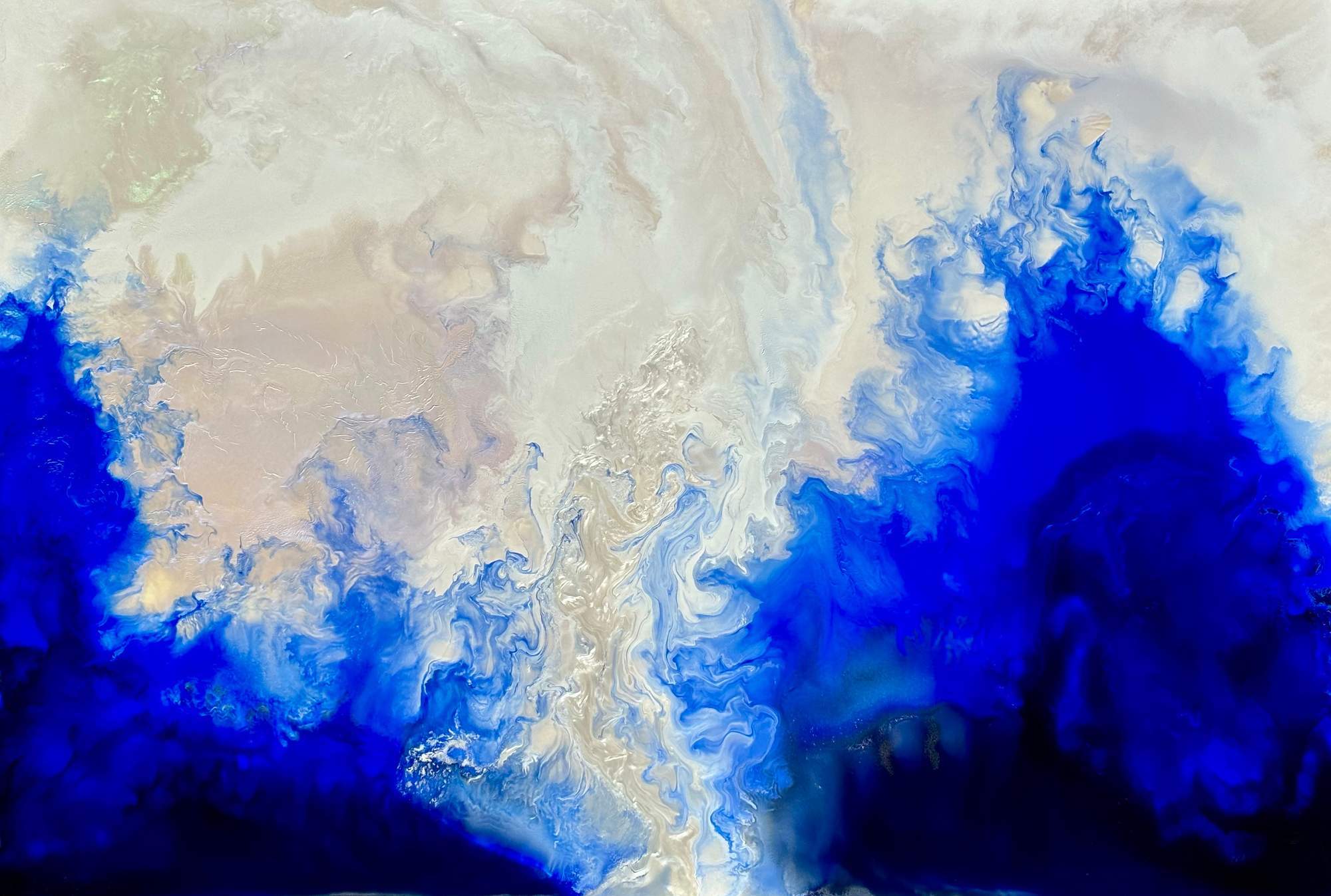Suzan Woodruff’s new body of ethereal, abstract paintings and undulating wall sculptures came at a price—one as much physical as psychological. Diagnosed with virulent cancer amid a national pandemic, she endured multiple surgeries and radiological treatments, which crippled her ability to eat and speak. What followed was a journey of excruciating fortitude and will, with her practice sidelined for a time but never far from view. Her solo exhibit at Billis Williams is aptly titled “From the Edge”—a testament to a journey that never guaranteed a happy ending. The exhibit spans the entire gallery, and the initial impression is one of elegant equanimity. Indeed, Woodruff’s paintings and sculptures belie her excruciating ordeal—transcend would be more precise—the abstractions ebb and flow, akin to a stream-of-conscious technique with no hint of moroseness or self-absorption.
Remarkably, these emotive works are meditations on beauty and consciousness, spectral ciphers playing on light with a bit of calculated randomness. In the same way light and space artist James Turrell crafts shifting light environments with physical elements, Woodruff seemingly bends and fashions light within her paintings. Early in her career, she devised a unique approach utilizing a gravity easel, essentially an omnidirectional pivoting table that accommodates oversized canvasses. Although physically demanding, deploying the easel introduces a certain amount of unpredictability, accommodating the paint’s character and physical predispositions. The titular Back from the Edge (2024) sets the tenor; the foregrounded vibrant metallic blues and whites spewing from a black morass.
Woodruff’s command of multiple mediums is evident. Much of the work is composed of pearlescent acrylic on panels such as the eruptive Geophysical (2023), which features pinks, yellows and deep blues in concert with earthy tones. Murmuration (2024) is a dramatic primordial study of the natural environment’s unpredictability—a wave of a brown, earthy miasma. Under less skilled hands, the paint’s opaline characteristics could easily overpower the imagery. But in this case, the totality of the picture becomes a powerful symbiosis of physical and environmental urgency. What’s new here is the inclusion of her luminous fiberglass wall sculptures. One such work, Visible Spectrum #1 (2024), utilizes holographic paint, resulting in a mesmerizing, aquatic play of color; it’s a compelling and sensual shape-shifting form. Woodruff also works on cast acrylic with otherworldly results, such as Cracks in the Ice (2023), which casts atmospheric, wraithlike imagery.
The totality of the works is emotionally cathartic and beautifully realized, but more importantly, Woodruff gives us something that seems in short supply these days: hope.


